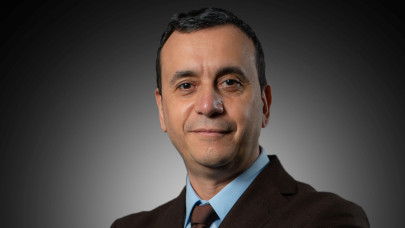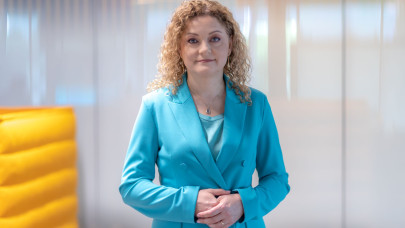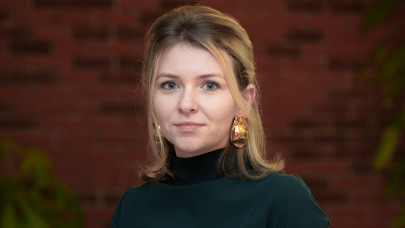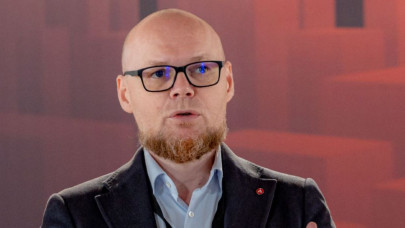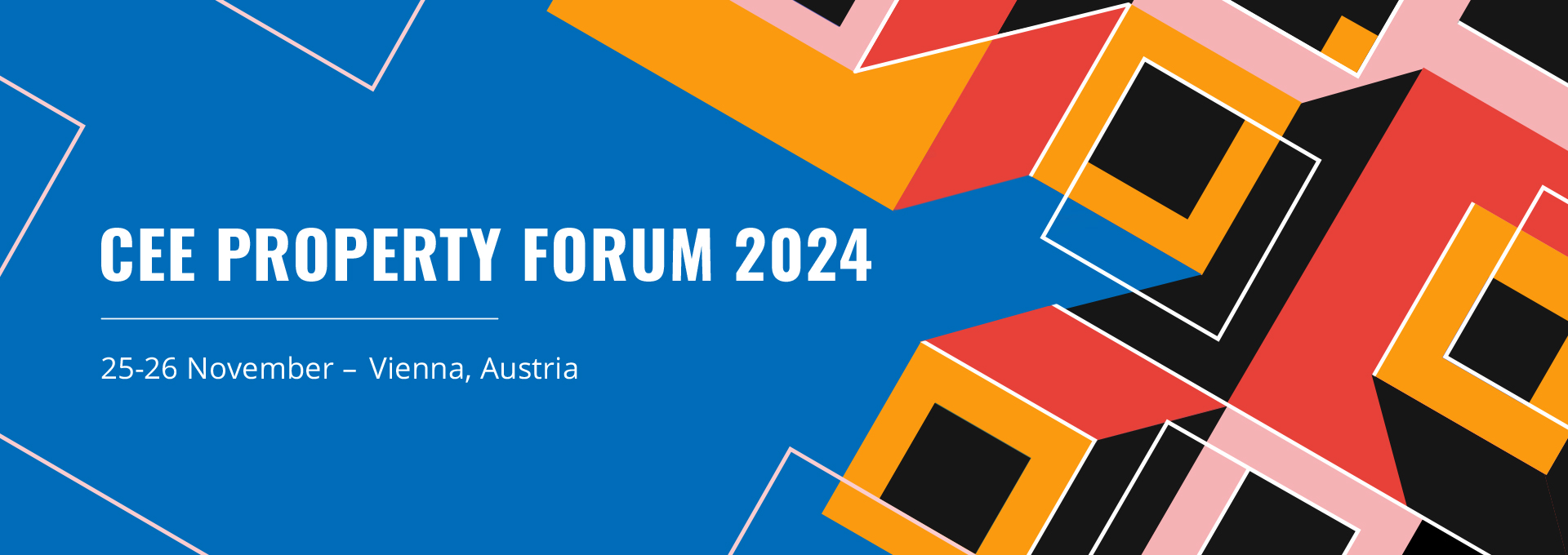How would you summarise Nuclearelectrica's ESG strategy?
Nuclearelectrica is part of Romania's response to ensuring sustainability and decarbonization, with the projects we run and also by giving priority to ESG measures.
In an era of decarbonization and the attempts to mitigate climate change, nuclear energy has become a basic source of energy security, energy efficiency, social and economic development, innovation, and talent fostering, which also addresses the ESG challenges.
Nuclearelectrica is the only nuclear energy producer in Romania, covering 20% of the country's energy needs which totals 33% of the national clean energy production.
As to the environmental footprint, Nuclearelectrica avoids the release of 10 million tons of CO2 every year by producing clean energy (205 million tons of CO2 were avoided since the commissioning of the first reactor in 1996).
While the production activity of Nuclearelectrica does not release any CO2 emissions, we still invest in projects that reduce even more the footprint on the environment.
Moreover, Nuclearelectrica implements investment projects with a vital role in Romania's decarbonization, amounting to approximately €12 billion by 2031.
Given the critical role of nuclear energy both in both the transition process and in attaining the decarbonization targets assumed by Romania, the outlooks of 2050 lay ahead for Nuclearelectrica the following ESG priorities, which are also the pillars of our current operation, development, and contribution to a clean and sustainable economy:
- Safe, environmentally-friendly, and employee protective sensitive operation of Units 1 and 2 of the Nuclear Fuel Plant and of Feldioara Branch
- Maintaining and developing the management system, including the environmental system, to cope with the future challenges raised by the major investment projects
- Protection of the environment, staff, and population
- Development of SNN's investment projects in the defined timeline
- Expanding the nuclear production facilities that do not generate CO2 emissions, which will contribute to reaching Romania's environmental targets
- Development of corporate governance as a coagulation and efficient integration process for all processes in SNN
- Care for employees, collaborators, and the population, by responsibly managing all operating and development activities
- SNN stakeholder involvement in the development of the Company and communicating of the SNN relevant aspects of governance, ethics, and integrity to them
- Development of a new generation of nuclear specialists to continue the operation and development of nuclear projects and, implicitly development of multiple staff attraction, retention, and training programs
- Ensuring supply security for the Romanian energy system, source available in the national energy system, and backup provision for renewable sources, by and beyond 2050.
What ESG investments is the company preparing this year?
The three major investment projects of SNN are complementary: refurbishment of Unit 1, the project of CANDU units 3 and 4, and the development of small modular reactors (SMR), developed in partnership with the USA. The first two provide clean energy, baseload, implicit security in the provision and availability of the energetic system, and the SMRs flexibility, the opportunity to protect economically and socially the areas with coal-fired power stations decommissioned, local development, and workplaces. An essential balance will be struck between the power reactors and SMRs in terms of production and response to decarbonization and the energy system or local needs.
Cernavoda NPP Unit 1 Refurbishment
The refurbishment of Unit 1 means another 30 years of operation after 2029, at less than half the cost of a new nuclear reactor, although similar in terms of pre-project complexity. In concrete terms, it means another 30 years without CO2 emissions.
Unit 1 of the Cernavoda nuclear power plant (CNE), with an installed capacity of 700 MW, was commissioned in 1996 and has so far delivered 133 million MWh, representing 9% of national consumption, over a period of 26 years. Unit 1 has also prevented the release of 130 million tons of CO2 into the atmosphere.
Cernavoda NPP Units 3 and 4 Project
Romania, in relation to the reduction of coal capacity, will need new capacity, high-capacity reactors, as a solution to decarbonization and transition, while simultaneously offering grid: stability, safety, and availability.
Through the CANDU Project, Romania will double its contribution of clean energy in the grid, reaching approx. 66% and will avoid approx. 20 million tons of CO2 annually with 4 units in operation. Moreover, approx. 20.000 jobs will be sustained for more than 30 to 60 years of operations.
Small Modular Reactors Project
Since 2019, Nuclearelectrica has started an in-depth process of analyzing different small modular reactors technologies (SMRs) meant to capitalize on the extensive nuclear operation experience Romania has in further developing the nuclear energy program with advanced technologies, particularly SMRs.
Approximately 70 SMR concepts are under development in various stages of the development and licensing process, demonstrating the interest and innovation in the field and the efforts of regulatory agencies to license SMRs. After a thorough process, Romania has selected NuScale's SMR technology, the only approved by the US Nuclear Regulatory Commission (NRC) ever since 2020.
At this point, Romania has the great advantage of leading the way, of being the 'second mover' (after the US) globally and “the first mover” at the European level in deploying NuScale SMR and developing its supply chain to support the deployment of SMR in Europe. SMRs are considered by experts as the most efficient solution for decarbonization, and in Romania they are an excellent solution for decarbonization, and energy independence in perfect complementarity with Unit 1 refurbishment, CANDU Project, and renewables.
Is nuclear energy considered clean energy? Why?
The current global geopolitical context has underlined more than ever the importance of a resilient, decarbonized, and independent energy system. Security of energy supply and affordable prices for citizens and businesses are urgent issues for policymakers around the world.
Nuclear energy is a safe, affordable, and clean source of energy, available 24/7, with extensive operational experience, which has been contributing to the decarbonization of economies for more than half a decade and currently supplies more than 10% of the electricity consumed worldwide. Moreover, nuclear energy is supplying 50% of the European Union's clean energy
Nuclear energy has no CO2 emissions for production and has the lowest life-cycle CO2 emissions per kWh of all energy sources (6g/kWh). Moreover, uranium is abundant and well-distributed around the world. The cost of fuel is only a small part of the cost of electricity generated, so nuclear energy can provide a stable cost of electricity for citizens, public administration, industry, agriculture, and all other human activities that depend on electricity.
Over the last 50 years, nuclear power has avoided about 74Gt of CO2 emissions, which represents almost two years of total global energy-related emissions.
New build nuclear projects are also cost-competitive, and small modular reactors (SMRs), currently under development, will bring the added advantage of lower initial costs and shorter construction times. In addition, large reactors, SMRs, and advanced modular reactors can offer a wide variety of non-power applications such as clean hydrogen production, district heating, desalination, and industrial heat, as well as complementing the variable nature of renewable technologies.
The global commitment to increase renewable energy generation will require additional dispatchable low-carbon capacity to balance our electricity grids. Global nuclear expertise and innovation should be fully utilized to secure current and future energy needs. The energy transition is not possible without maintaining and expanding the role of nuclear energy.
How does Nuclearelectrica contribute to a sustainable future?
The two nuclear units currently contribute to Romania's energy security by supplying approx. 20% of the country's energy demand, but also to the attainment of the decarbonization targets with 205 million tons of CO2 avoided since commissioning and to date (10 million tons of CO2 avoided annually by operation of the two units of Cernavodă), and contribute 33% of the total clean energy of Romania.
By expanding nuclear capacity with two new CANDU units and a 6-module SMR power plant, nuclear energy will reach a 66% clean energy contribution of the total clean energy generated in Romania, with 24 million tons of CO2 avoided annually and more than 20,000 jobs created. Thus, the share of clean energy delivered at the national level from nuclear sources will increase significantly, thousands of new jobs are created and/or maintained directly and indirectly, and the communities and the industry develop.
Moreover, by developing SMRs, Romania will use a base load nuclear technology which is safe, financially affordable, and completely free of CO2 emissions, located on the sites of former coal-fired power plants, and will contribute to the revitalization of those areas. Thus, SMRs will support the National Recovery and Resilience Plan of the Romanian Government to phase 4.59 GWe of coal-fired capacities by 2032.
Looking even further into the future, nuclear technology is already addressing the changes in consumer needs, becoming more flexible and easier to build in different areas, and safer to operate thanks to the deployment of state-of-the-art nuclear safety solutions for the environment and the population. Small modular reactors are the nuclear industry's response to the decarbonization requirements, which makes this technology easier to implement and operate in removed grid areas, industrial sites, etc. With advanced technology within reach, SMRs enjoy increased passive safety systems that use fewer resources, such as fuel and cooling water, in order to safely operate and stop.
SNN's nuclear projects require investments of up to €12 billion in the coming years. Their impact is quantifiable both in terms of the increased supply security for Romania and the region, considering the unified European market which is estimated to reach a 15% interconnectivity by 2030, as well as the development of the related industries, the infrastructure, the research and development, and the education.
What sustainable projects did the company run last year?
In addition to developing the before mentioned strategic projects, we placed emphasis on further reducing the carbon footprint by concluding relevant partnerships.
· The Memorandum of Understanding (MoU) between RoPower Nuclear SA, the newly established project company for the implementation of Small Modular Reactors (SMR), and Donalam SRL, part of AFV Beltrame Group, a leading European steel producer to explore cooperation and investment opportunities to support the development of the first SMR project in Romania, which could also have a great impact in the realization of green steel production in Romania.
· Another project, which is advancing rapidly is the Tritium Removal Facility, aimed at maintaining nuclear safety at the highest standards and environmental protection. The project is a concretization of the continuous concerns to improve the performance of the Cernavodă NPP, the concern for the population, and the environment. The implementation of the project, which will be the first in Europe, will allow furthermore the reduction of the environmental footprint. We apply ESG measures because we are aware of the significant role that any organization in the energy industry plays in ecological protection.
· Another project, was the partnership with BWXT Medical Ltd. part of BWX Technologies, a company with more than 40 years of experience in the field of nuclear medicine, i.e. production of medical isotopes, pharmaceuticals, medical devices. Nuclear medicine is an important tool for cancer management, contributing to early cancer diagnosis and prognostic assessments aimed at helping physicians make critical decisions and tailor treatment to patient needs.
· In 2022, SN Nuclearelectrica SA launched the "Nucleus of Good" social responsibility platform, based on the company's strategic directions and vision to build a sustainable future for the next generation, both through the production of clean energy at excellent standards and through the socio-economic impact it has in Romania. For 2022 and 2023, Nuclearelectrica's CSR strategic directions are education, healthcare, and environmental protection. In 2022, Nuclearelectrica sponsored 60 projects in health, education, and environmental protection, impacting 15 million people.
· Also, in 2022, Nuclearelectrica launched Nucleus of Excellence, the company's platform for the growth of a new generation of specialists. In 2021 we recruited around 500 people, and a similar number in 2022 and in 2023. We have and are developing internship, scholarship, and dual learning programs to develop a new generation of nuclear energy specialists. The company's Nucleus Of Excellence focuses on the timely identification of talent and efforts to retain it in the organization, identifying present and future needs, developing partnerships with universities, increasing the training of the existing workforce, and building an organizational culture based on meritocracy and performance, where young people are seen as the resource of the future.
At what stage is the project regarding the construction of reactors 3 and 4 at Cernavoda?
The strategy of continuation of the CANDU Units (3&4) Project of Cernavoda Nuclear Power Plant, approved by SNN shareholders in 2021, shall be implemented in three phases, in compliance with the international experience in the construction of the nuclear power plant.
Phase 1 started at the end of the year 2021, represents the preparatory phase, initiated by the capitalization and operationalization of the project company, Energonuclear S.A. In this phase, which is approaching finalization, a set of engineering and safety documentation will be prepared/updated, being needed for the start of the Project (update of the basic licensing documents, of the safety guidelines, of the projects variations related to nuclear safety, reassessment of the existing civil structures, etc.).
Within this phase, on 25 November 2021, Energonuclear S.A., the project company, signed the first agreement with Candu Energy, a Member of SNC-Lavalin Group and the Design Authority and OEM Candu (the Original Manufacturer of Candu Technology) for the Project. Under the agreement, CANDU Energy shall provide engineering services to prepare and update the documentation needed for the start of the Project of CANDU Units 3 and 4.
On 9 June 2023 was signed the Support Agreement between the Romanian State and the National Company Nuclearelectrica for the development of the National Strategic Project Units 3 and 4 Cernavoda NPP.
The signing of the Support Agreement between the Romanian State and Nuclearelectrica for the development of the Cernavoda NPP Units 3 and 4 Project allows the start of the activities related to Phase II of the Project, namely: the conclusion of the contracts for the development of the critical engineering necessary to update the Project; the updating of the Project budget; the structuring and contracting of the financing and the agreement of an appropriate contractual architecture for the implementation of the Project; the obtaining of the favorable opinion of the European Commission following the notification of the Project according to Art. 41 of the EURATOM Treaty and a favorable decision in accordance with the relevant European provisions on State aid; Obtaining the Nuclear Safety Authorisation for the Construction phase and making the Final Investment Decision to proceed to Phase III (Construction).
Phase 3 of the Project, expected to last 69-78 months, consists in mobilizing the construction site, the start of the construction works, and putting into service and commercial operation Unit 3 in 2030 and Unit 4 in 2031.
Within COP 27, US Exim Bank announced the issue of two expressions of interest for financing the technical services provided by the USA in relation to 3 and 4 Units from Cernavoda, developed by the subsidiary of National Company Nuclearelectrica S.A.
Based on the preliminary information presented, EXIM could take into consideration the financing of up to $50 million for technical pre-project services as a part of the Engineering Multiplier Program (EMP) during the second phase of the project. Subsequently, during phase III of the project, EXIM could take into consideration the financing of up to $3 billion for engineering and project management services for the agreement of completion of Units 3 and 4 of the Cernavoda nuclear power plant.



